1873-1875 Claude Joachim Levefre
Sefton Lodge was built in 1873 by Monsieur Claude Joachim Lefevre, who later sold it to William Stirling-Crawfurd in 1876 when Lefevre returned back to France. Lefevre first came to prominence in England in 1870 when he purchased a number of horses from Count de Lagrange, sending the horses to be trained by Tom Jennings senior in England at La Grange stables in Newmarket. Some time between 1870 and December 1872 Lefevre lived at Fitzroy House in Newmarket, although within a year the house, which later became known as Sefton Lodge, was completed, allowing Lefevre to move in. He registered his famous racing colours made up of the tricolour in 1871, but, at first, he was not well-received by the racing establishment in England, although prejudice against him waned due in no small part to the support he received from Sir George Chetwynd. His horses initially ran under the name of Mr T Lombard, with many enquiring who the mysterious, successful Mr T Lombard actually was, but in due course it was revealed to be Lefevre. His first runner of any significance to be seen in the tricolour colours was Roquefort who was unplaced in the 1871 Lincoln in which Vulcan and Veranda dead-heated. Days afterwards Lefevre showed his intent to the racing world by purchasing Vulcan, who duly won the Nottingham Spring Handicap. It was a remarkable introduction to the British racing scene, but Lefevre followed up with Alaric, Blenheim (not the Derby winner), Capsule, Dutch Skater, Eole II, Flageolet, Hauteur, Mortemar and Prince Henry, all winning when trained by Tom Jennings senior. In 1872 he won the 1000 Guineas with Reine, although that was an unexpected victory, for the filly won at 20/1. However, to show that it was no fluke, Reine followed up with a win in the Oaks. Within a year he had landed the Ascot Gold Cup with Henry, defeating a star-studded field which included both of Meyer de Rothschild's Classic winners Favonius and Hannah. Lefevre's star was undoubtedly Tristan (SR 1926) who raced 54 times, winning no less than 29 races, including the Hardwicke Stakes, the Epsom Gold Cup twice, the Champion Stakes, the Ascot Gold Vase and a second Ascot Gold Cup. However, the colt was soundly defeated when unplaced at 60/1 in the 1881 Epsom Derby won by the first American bred winner Iroquois (SR 1956). After five action packed years in England, fully embracing the racing scene, Monsieur Lefevre returned to France and settled down on his family's estate at Chamant. He kept an interest in English racing, winning the 1000 Guineas for a second time in 1883 with Hauteur trained by Tom Jennings junior. He died from gout at his chambers in the Rue du Cirque, Paris on Friday 26th June 1896.
1871 Ascot Gold Cup MORTEMER (evens fav) owned by Claude Joachim Lefevre, trained by Tom Jennings and ridden by George Fordham
1872 1000 Guineas REINE 100/6 (SR 1919) owned by Claude Joachim Lefevre, trained by Tom Jennings and ridden by Henry Parry
1872 Epsom Oaks REINE 5/2 fav (SR 1919) owned by Claude Joachim Lefevre, trained by Tom Jennings and ridden by George Fordham
1872 Ascot Gold Cup HENRY (6/1) owned by Claude Joachim Lefevre, trained by Tom Jennings and ridden by George Fordham
1882 Epsom Gold Cup (later the Coronation Cup) TRISTAN (1/3 fav) owned by Claude Joachim Lefevre, trained by Tom Jennings and ridden by Fred Archer
1882 Epsom Gold Vase (later the Queen’s Vase) TRISTAN (1/3 fav) owned by Claude Joachim Lefevre, trained by Tom Jennings and ridden by George Fordham
1882 Hardwicke Stakes TRISTAN (8/13 fav) owned by Claude Joachim Lefevre, trained by Tom Jennings and ridden by George Fordham
1882 July Cup TRISTAN (4/6 fav) owned by Claude Joachim Lefevre, trained by Tom Jennings and ridden by Fred Archer
1882 Champion Stakes TRISTAN owned by Claude Joachim Lefevre, trained by Tom Jennings and ridden by Fred Webb
1883 1000 Guineas HAUTEUR 9/4 fav (SR 1876) owned by Claude Joachim Lefevre, trained by Tom Jennings and ridden by George Fordham
1883 Epsom Gold Cup TRISTAN (4/6 fav) owned by Claude Joachim Lefevre, trained by Tom Jennings and ridden by George Fordham
1883 Ascot Gold Cup TRISTAN (4/7 fav) owned by Claude Joachim Lefevre, trained by Tom Jennings and ridden by George Fordham
1883 Hardwicke Stakes TRISTAN (5/4) owned by Claude Joachim Lefevre, trained by Tom Jennings and ridden by Fred Webb
1883 Champion Stakes TRISTAN owned by Claude Joachim Lefevre, trained by Tom Jennings and ridden by Fred Webb
1884 Hardwicke Stakes TRISTAN (7/2) owned by Claude Joachim Lefevre, trained by Tom Jennings and ridden by Fred Webb
1884 Champion Stakes TRISTAN owned by Claude Joachim Lefevre, trained by Tom Jennings and ridden by Fred Webb
Stirling-Crawfurd married Caroline, Duchess of Montrose (born Caroline Agnes Beresford) when he was 57, it being her second marriage. He owned the 1878 Epsom Derby winner Sefton after whom the stables were later named, and 3 years later he owned the 1881 1000 Guineas and Oaks winner Thebais. A year later he captured the 1000 Guineas with St Marguerite ridden by Charles Wood. In January 1883 Stirling-Crawfurd submitted plans to make extensive alterations to Sefton Lodge, also attempting to lease the shooting rights over the coverts and land on the Exning Estate owned by the Jockey Club. However, by the Spring 1883 William Stirling-Crawfurd had died at Cannes, leaving everything to the Duchess who was, by then, living in Sefton Lodge.
SEFTON
Sefton, a bay colt by Speculum out of Lady Sefton, was foaled in 1875 at the Glasgow Stud owned by Colonel Jonathan Peel. He was purchased for 1000 Guineas as a yearling by William Stirling-Crawfurd, but proved to be a disappointment as a 2-year-old, racing 4 times without winning. In the 1878 Craven Stakes he showed significant improvement to be beaten just half a length by Thurio. He then won the 1878 City and Suburban Handicap at Epsom before reaching the pinnacle of his career by landing the 1878 Epsom Derby at 100/12 when trained by Alec Taylor senior and partnered by Harry Constable. He later went on to win the 1878 Newmarket St Leger before retiring to take up a stud career, although he did not perform well whilst at stud.
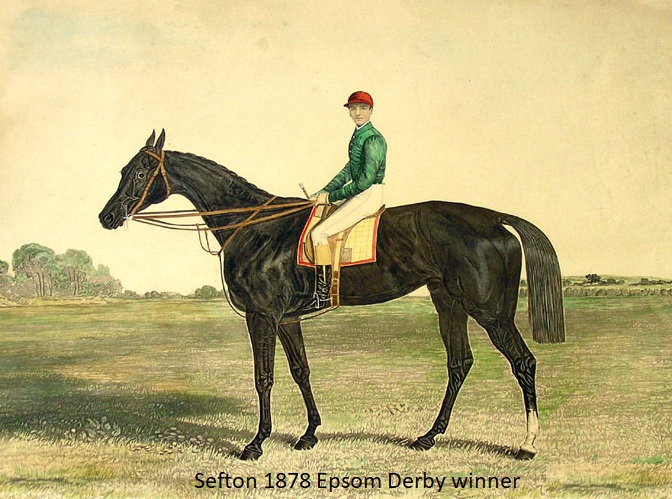
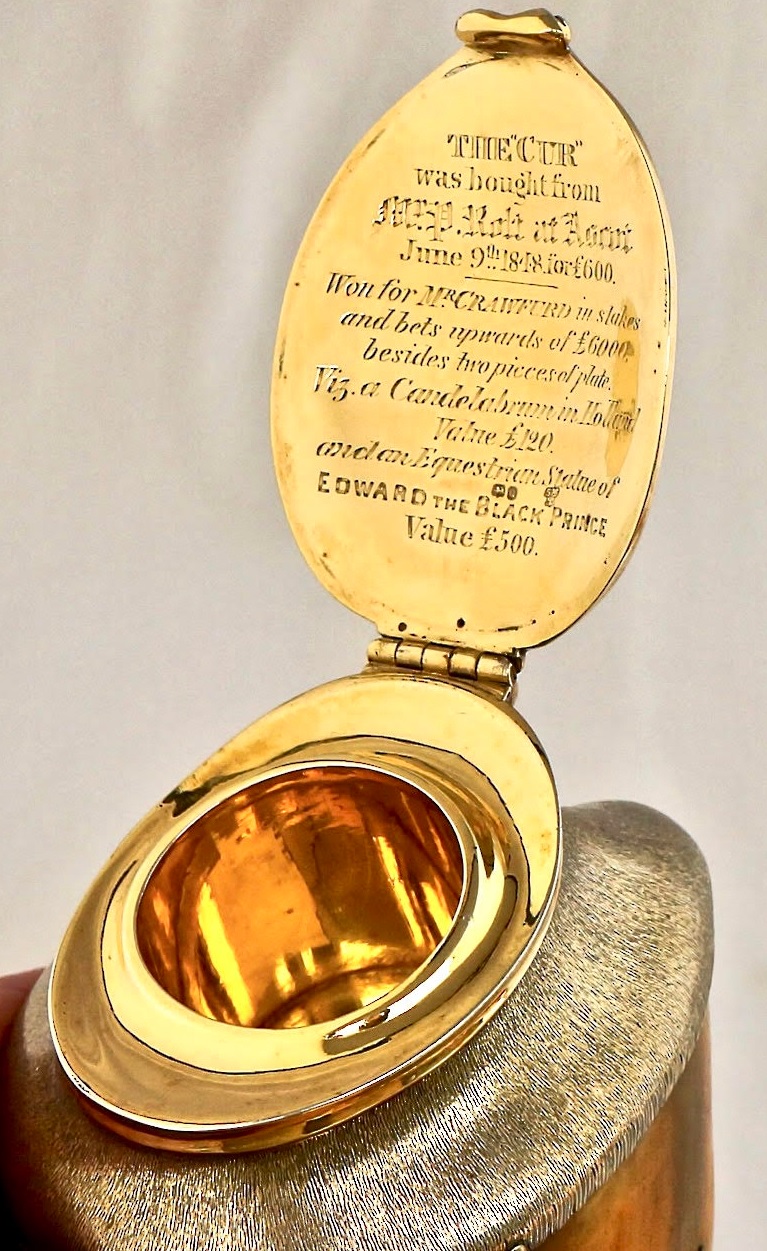

Newmarket
Tuesday 10th October 1848
Cesarewitch Stakes
1. THE CUR (5/1) owned by Mr W S Crawfurd and ridden by S Rogers
2. DACIA (12/1) owned by Colonel Peel and ridden by Collins
3. ELLERDALE (33/1) owned by Captain Harcourt and ridden by Job Marson
4. PALMA (50/1) owned by Colonel Peel and ridden by Brown
The Cur was the 10th ever winner of The Cesarewitch in 1848 as well as numerous other races. The horse was owned by William Stuart Stirling-Crawfurd and he bought The Cur on June 9th 1848 at Ascot for £600 (equivalent to £76,000 in 2022). As well as the Cesarewitch, The Cur won some races in Holland and The Brighton Stakes at Brighton, the Chesterfield Handicap at York, the Warwick Cup at Warwick and the Queen's Plate at Lichfield. The Cur won upwards of £6000 (equivalent to £760,000 in 2022) in prize money and bets for Mr Crawfurd. The hoof has been converted to an inkwell with silver gilt mounts and all the information above is engraved on both sides of the inkwell lid.
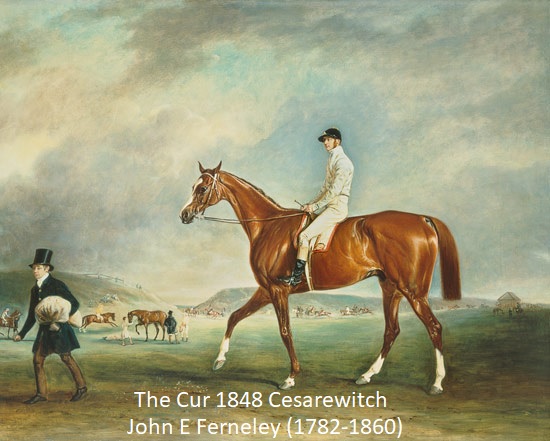
For over 4 centuries racing has been staged in Newmarket, but how have the racecourses evolved from an initial starting point at Fleam Dyke Pumping Station, some 8 miles from the town, with a winning post barely 200 metres from the town centre, into two world recognized, excellent racecourses and a universal acceptance that Newmarket is the Headquarters of racing?
To access an interactive racecourse map showing over 50 individually named racecourses CLICK HERE. The map will enable you to:-
1. Determine when extended races over 8 miles, 6 miles and 4 miles began to be replaced by the courses now visited by thousands annually;
2. Consider how the challenge of crossing the Devil's Dyke was overcome;
3. Contemplate why the town no longer has a steeplechase course despite having at least 5 courses during the past 2 centuries;
4. Examine the practicalities of having up to 48 starting posts and winning posts;
5. Appreciate that it was not financially viable to have an open racecourse spread widely across the heath, with a finishing post barely 200 metres from the town centre;
6. Research how and why the Cambridgeshire Handicap has been contested over 3 different courses.
NOTE: The map does not make mention of 2 particular courses:-
(i) Sefton Course (also known as the Cambridge Road Course)
Source: 1970 Raceform.Used from 1959 to 1975.
(ii) New Circular Course
The Circular Handicap was run on Friday 29th October 1875 on the New Circular Course of about two miles.
Source: London Standard (30th October 1875): ''the horses started near the Turn of the Lands, ran back way of the Cambridgeshire Course towards the Ditch, and afterwards proceeded down the side of the Tan Gallop, and turned into the Rowley Mile near the Bretby Stakes starting post, finishing at the stand at the end of the flat. Except in the hollow near the Cambridgeshire start the runners should have been visible all the way if the sky had been bright and clear''.
Another report hoped that the Circular Handicap would become a feature in future programmes, as it would be contested in front of the new grandstand which would be completed in about a year and would be able to accommodate thousands.
(I am grateful to Tim Cox for bringing attention to these 2 courses.)
Enjoy researching the intriguing history of Newmarket and its many racecourses.
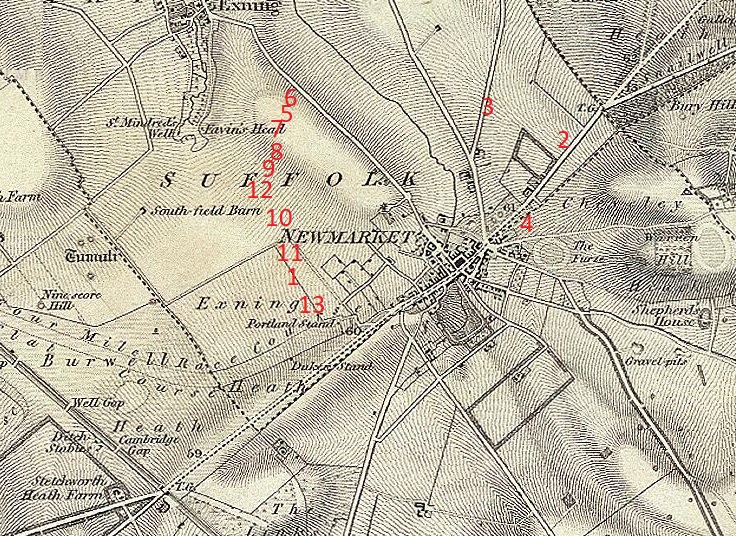
Spring 1883-1884 Caroline, Duchess of Montrose, Captain James Machell
Caroline, Duchess of Montrose, inherited Sefton Lodge on the death of her husband William Stirling-Crawfurd and began to use the pseudonym Mr Manton because it was frowned upon for women to own racehorses. As Bedford Cottage and Sefton Lodge were so close together Captain James Machell provided guidance for the Duchess. However, they were both volatile characters who liked their own way, so the working relationship did not survive for too long. She went on to appoint Richard Sherrard as her private trainer, although that partnership was to only survive for 2 seasons.
Late 1884-July 1885 Thomas Fordham
Tom Fordham was born at Newmarket, the son of Thomas Fordham, a long-time lad in the town, and rode a winner or two on the Flat in the later 1850s. In May 1861 he went to Prussia as first jockey to Count Garshin on a two year contract. Back at Cambridge in September 1863 at 8st he was available under both rules and in October 1863 he departed to ride in Australia. For many years he worked for Tom jennings senior, but Fordham was then appointed to take charge of Mr Manton's horses at Sefton Lodge in late 1884, remaining there until July 1885 when he was dismissed. Afterwards he worked for George Dawson at Heath House and was later head lad to W T Robinson at Middleton Cottage, prior to being engaged as trainer to Prince Soltykoff's 24 horses at Kremlin House at the beginning of 1893.
In 1880 Richard Sherrard had been head lad at Bedford Lodge Stables to Joe Dawson, taking over when Dawson was not fit enough to continue. On 13th November 1882 Richard leased The Nunnery Stables, training for Sir George Chetwynd, but left on 10th December 1884 after 2 seasons. He then trained at Sefton Lodge in July 1885 for Caroline, Duchess of Montrose, but she was difficult to work for, and once their relationship broke down he moved in 1886 to Machell Place.
Summer 1886-Summer 1887 Duchess of Montrose, John Evans
John Evans, born at Manchester in 1855, became apprentice to Fred Bates, based at various times in Lambourn and Middleham, but he then transferred to Newmarket where he lived for the rest of his life. He worked for both William Jarvis and Peter Price before being put in charge in summer 1886 of the Duchess of Montrose's horses at Sefton Lodge including the horses she had previously had with Charles Archer. Just over a year later Evans had moved on to Chevalier Ginistrelli's stable at Sackville House where he remained until December 1893. During his time at Sackville House he trained Signorina, winner of the 1889 Middle Park and Lancashire Plate.
1889 Middle Park stakes at Newmarket SIGNORINA 4/6 fav owned by Chevalier Edorado Ginistrelli, trained by John Evans and ridden by George Barrett
1888-1894 Caroline, Duchess of Montrose, Charles Golding, William Grey
While based at Sefton Lodge the Duchess had the grounds around the house laid out and built St Agnes Church, as a memorial to her husband, but she even quarrelled with the vicar who had prayed for rain when one her her horses needed firm going. She remarried yet again in August 1888, marrying Mr Henry Marcus Milner, spending their honeymoon at Sefton Lodge. After the marriage her horses ran under the name of Henry Milner, and he later became a trainer and influenced many of Lord Derby's Stanley House purchases. Charles Golding trained for the Duchess until 1890 when he was replaced by William 'Billy' Grey who had previously trained for Lord Cawdor. Grey remained in charge until the end of the 1893 season, moving on to Russley Park in 1894. During his brief time at Sefton Lodge he won the 1890 St James's Palace Stakes with Jannisary, following up in the 1891 King's (Queen's) Stand Stakes with Lady Caroline. In 1893 Canterbury Pilgrim was foaled at her Sefton Stud, although she had sold much of her racing business by then and died by the time the filly won the 1896 Epsom Oaks and Jockey Club Cup. She died on 16th November 1894 leaving £181,325 17s 5d in her will, the equivalent today of £23 million. Her funeral was held on 20th November 1894, her remains travelling from London to Sefton Lodge on that morning, after which there was a service at her beloved St Agnes Church followed by interment at the private chapel on the Sefton Lodge Estate.
1890 St James's Palace Stakes at Royal Ascot JANNISARY 8/1 owned by Henry Milner, trained by Billy Grey and ridden by Tommy Loates
1891 Queen's Stand Stakes at Royal Ascot LADY CAROLINE 20/1 owned by Henry Milner, trained by Billy Grey and ridden by Richard Chaloner
1893 John Day
For the 1893 season Mr Henry Milner's horses were sent to Sefton Lodge Stables to be trained by John Day
1894-Summer 1896 Colonel Harry McCalmont
In Summer 1896 Martin D Rucker succeeded Harry McCalmont in the occupation of Sefton Lodge.
Summer 1896-1898 George Platt, Martin D Rucker, Albert F Calvert
In the summer of 1896 George Platt took over the training duties at Sefton Lodge for the partnership of Martin D Rucker and Albert F Calvert. Martin Rucker, by accident rather than design, had made a small fortune out of the bicycle boom, but lost it eventually in the world of racing. Mr Calvert was an explorer, company promoter, scholar of sorts, and fraudster, one of whose targets was Martin Rucker. Martin Rucker bought Sefton Lodge in summer 1896 from Mr McCalmont for £36,000. McCalmont, the then tenant, had bought the property in May 1895 from the Duchess's heirs. For two years Platt trained their motley collection of thoroughbreds. Most were sellers but they had their moments. In Rucker's colours Platt prepared winners of the 1897 Cork and Orrery Red Heart, and the same year's Wokingham Stakes winner El Diablo and, for Calvert, the Northumberland Plate with Bradwardine. In April 1898 Mr Rucker sold his horses, at a considerable loss, said to be £28,000, and added his name to the forfeit list. From the beginning of 1899 Platt trained Prince Soltykoff's horses at Kremlin Cottage including the winner of that year's Hardwicke Stakes at Royal Ascot Ninus.
1897 Cork & Orrery Stakes (Diamond Jubilee Stakes) at Royal Ascot RED HEART 1/20 fav owned by Martin D Rucker, trained by George Platt and ridden by Charles Wood
1897 Wokingham Stakes at Royal Ascot El DIABLO 7/1 owned by Martin D Rucker, trained by George Platt and ridden by Charles Wood
1897 Northumberland Plate at Newcastle BRADWARDINE 3/1 fav owned by Albert F Calvert, trained by George Platt and ridden by Charles Wood
1899 Hardwicke Stakes at Royal Ascot NINUS 7/4 fav owned by Prince Soltykoff, trained by George Platt and ridden by Charles Wood

1900-January 1905 Leonard Brassey
Henry Leonard Campbell Brassey, born on 7th March 1870, was the second but eldest surviving son of Henry Arthur Brassey of Preston Hall, Aylesford, Kent. In 1894 he married Lady Violet Mary Gordon-Lennox, daughter of the 7th Duke of Richmond, and they had 6 sons, two dying in infancy and a further two predeceasing their parents. Leonard and Violet were resident in Sefton Lodge in 1900 when Leonard owned the 1000 Guineas winner Winifreda. His residence in Newmarket became important in December 1902 when he was elected as the new Unionist candidate for East Cambridgeshire, but by 1904 he had purchased Apethorpe Hall, near Peterborough, which he made his parliamentary seat. He went on to sell Sefton Lodge to Solly Joel in January 1905.
1900 1000 Guineas WINIFREDA (SR 1797) 11/2 owned by Leonard Brassey, trained by Tom Jennings junior and ridden by Sam Loates
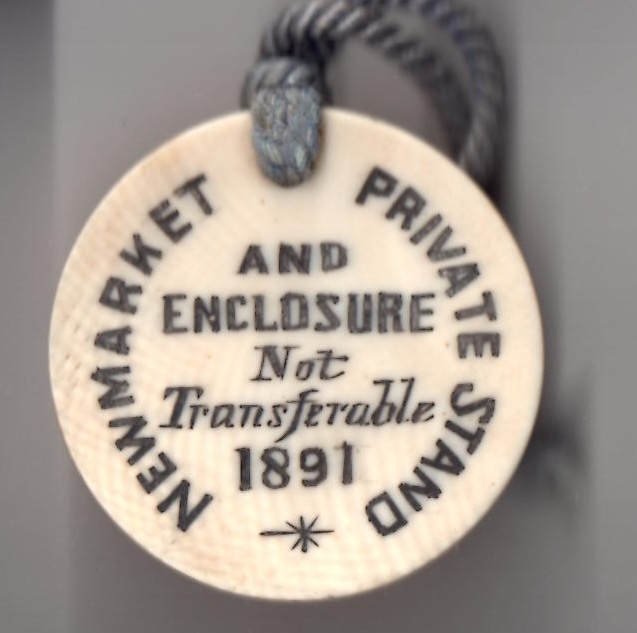
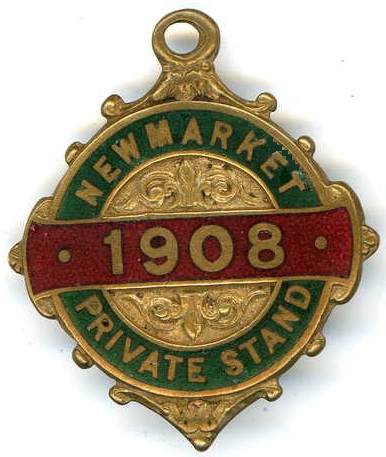
January 1905-1929 Solomon Joel, Charles Peck (until August 1916)
Solomon Barnato Joel, born in London on 23rd May 1865, moved to South Africa in the 1880s where he made his fortune in the diamond mines before widening his interests to include banking, mining, finance, brewing and the railways. He married the actress Ellen 'Nellie' Ridley and they had 5 children, two of which died whilst very young. His son Stanhope, born in 1903, later became a prominent racehorse owner, while his daughter Eileen, born in 1907, became the first lady jockey to win an Open race when she partnered Hogier to win the 1925 Newmarket Town Plate. In 1903 Solly purchased the Maiden Erlegh Estate near Reading, while in January 1905 he bought Sefton Lodge Stables from Leonard Brassey, enabling him to further pursue his growing interest in racing. In 1906 he appointed Charles Peck as his private trainer at Sefton Lodge. Peck, born in 1873, was able to launch his training career at Ogbourne in 1894 with just £100 capital and 15 harnesses given to him by his father Robert Peck. He served in the British Army during the Boer War, but on his return to England he began training for Solly Joel at Ilsley where he trained Bachelor's Button to win the 1904 Champion Stakes. He was then appointed to take charge of Solly Joel's string at Sefton Lodge. Unfortunately, Charles did not handle his own financial affairs well, and racked up huge gambling debts before applying for bankruptcy in October 1916 with declared debts of £10,837. However, he did train well for Solly, advising him to purchase Polymelus from Mr Faber for 4200 guineas, winning the Champion Stakes, Duke of York Stakes and Cambridgeshire at the ridiculously short price of 11/10 fav. Polymelus became a foundation stone for Solly in his bid to extend his thoroughbred breeding programme, because Polymelus became the five-time leading sire of Great Britain, siring the 1915 English Triple Crown winner Pommern (SR 2064). In 1922 Solly went on to purchase Moulton Paddocks from the estate of the recently deceased Sir Ernest Cassel, and between August 1923 and December 1924 Frank Barling trained at Sefton Lodge. Solly died at Moulton Paddocks on 22nd May 1931 and they passed to his son Dudley, although he allowed the stables to fall into a state of disrepair, while the 31 boxes of Sefton Lodge Stables were put onto the market. Meanwhile Charles Peck moved to Wantage, and later Foxhill, to train for Jack Joel.

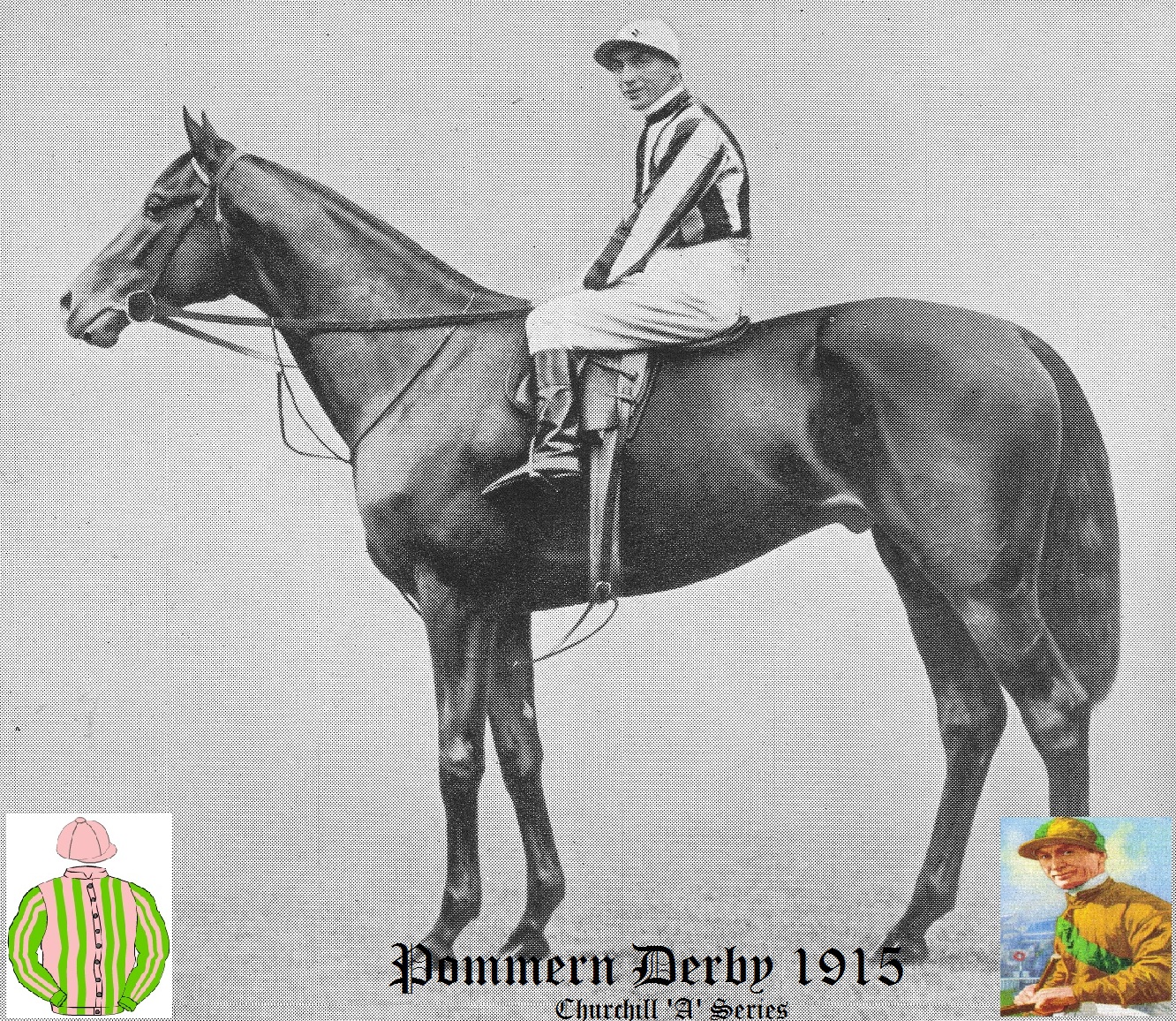
1906 Ascot Gold Cup BACHELORS BUTTON 7/1 owned by Solly Joel, trained by Charles Peck and ridden by Danny Maher
1906 Cambridgeshire POLYMELUS 11/10 fav owned by Solly Joel, trained by Charles Peck and ridden by Danny Maher
1906 Champion Stakes POLYMELUS 1/5 fav owned by Solly Joel, trained by Charles Peck and ridden by Danny Maher
1907 Princess of Wales's Stakes POLYMELUS 7/4 owned by Solly Joel, trained by Charles Peck and ridden by Danny Maher
1914 Richmond Stakes POMMERN 10/1 owned by Solly Joel, trained by Charles Peck and ridden by Walter Griggs
1914 City and Suburban Handicap MAIDEN ERLEGH 100/14 owned by Solly Joel, trained by Charles Peck and ridden by Wal Griggs
1915 2000 Guineas POMMERN (SR 2064) 2/1 fav owned by Solly Joel, trained by Charles Peck and ridden by Steve Donoghue
1915 New Derby Stakes at Newmarket POMMERN (SR 2064) 11/10 fav owned by Solly Joel, trained by Charles Peck and ridden by Steve Donoghue
1915 St Leger (September Stakes at Newmarket) POMMERN (SR 2064) 1/3 fav owned by Solly Joel, trained by Charles Peck and ridden by Steve Donoghue
1916 June Stakes POMMERN 4/9 fav owned by Solly Joel, trained by Charles Peck and ridden by Steve Donoghue
Etienne de Mestre first took out a Flat licence in September 1909 at Warwick House, Middleham, but in February 1912 he leased Danby House at Malton and the following year moved south to Bishops Cannings. By 1917 De Mestre was on the move to Green Lodge, and between december 1919 and December 1920 he was based at Pounds Farm, near Whatcombe. He was enticed back to Newmarket by Solly Joel, this time at Sefton Lodge stables in December 1920 where he remained for just over two years. At the end of 1922 Mr S B Joel appointed him private trainer at Moulton Paddocks.
Straight after the end of the First World War Francis (Frank) William Bonner Barling, who originated from Ross in Herefordshire, trained at Falmouth Lodge for Lord Glanely,1st Baron Glanely. He reached the pinnacle of his career when he trained the unexpected winner of the 1919 Epsom Derby Grand Parade (SR 1968) at 33/1 when ridden by Fred Templeman. It proved to be a spectacular year for both owner and trainer, recording 7 wins at Royal Ascot, all of which are listed below. Frank left Falmouth House the next year due to ill health, but began training again in August 1923 at Sefton Lodge, and then in 1925 and 1926 he rejoined La Grange where he had been for a short period in April 1920. By 1927 he had purchased Kremlin House. During the time he operated from the various stables listed, he was also running a private stable from Primrose Cottage, passing it on to his son, Geof Bonnor Barling, in 1932. Frank died in Newmarket on 17th April 1935.
1929-January 1937 Brigadier Henry Archdale Tomkinson, R W Colling
Henry Archdale Tomkinson, born in 1881, was a prominent member of the British Army during the First World War, and was captain of the British Polo Team which won the International Polo Cup in 1914 and 1921. He went on to become the team manager in charge of the 1927 British Team which contested the International Polo Cup. He was made a Brigadier, residing at Sefton Cottage, on the Sefton Lodge estate, while Racing Manager to HM King George V. He enticed Robert Colling away from Bedford Lodge Stables in 1929 where he reamined ubtil 1937. Tomkinson died on 21st January 1937, after which the Cottage was occupied by Captain Percy Whitaker in the summer of that year.

Summer 1937-1944 Captain Percy Whitaker, Frank D Cole, J Thwaites
Captain Percival Ayfon Onley Whitaker, born in Suffolk on 31st May 1870, was educated at Wellington College before launching a successful military career, firstly in the Sussex Harriers and later in the Essex Militia. He was a noted amateur jockey, winning the Amateur riders Championship in 1907 with 30 wins, although his most successful year was in 1908 when he won the Championship again, with 26 wins, but also partnered Rory O'More to success in the 1908 National Hunt Steeplechase. He then finished third on Lawyer III in the Grand National behind Rubio, but the horse died the next day, and in a post-mortem it was revealed Lawyer III had only one lung. Percy was an equally accomplished trainer on the Flat and over jumps. In 1923 he partnered Silvo to success in the Aintree Grand Sefton Chase before the horse finished a creditable 3rd in the 1924 Grand National behind Master Robert. In 1929 Percy moved his training base from St Giles, Salisbury to Paddock Cottage, Newmarket where he achieved some of his best Flat race wins. These included Knight Error winning the 1931 Lincoln Handicap, and Prior gaining a victory in the 1935 Royal Hunt Cup. In the Summer of 1937 Percy moved to Sefton Cottage, left vacant after the death of Brigadier Henry Tomkinson, and used as an over-flow yard by R W Colling, but then, at the age of 67, Percy began to suffer from ill health. On 26th January 1938 Frank D Cole, previously private trainer to Mr Clare Vyner in Doncaster, was appointed his assistant. However, as Percy's health deteriorated J Thwaites looked after the Sefton Lodge Stables for him while Percy became a patient in the Rous Memorial Hospital in Newmarket. He died at the Hospital on 2nd October 1944 aged 74.
1931 Lincoln Handicap KNIGHT ERROR 100/9 owned by Captain Wilson, trained by Captain Percy Whitaker and ridden by Freddie Fox
1935 Royal Hunt Cup PRIOR owned by Mr H B Hankey, trained by Captain Percy Whitaker and ridden by Middleton
1939-1945 Military Base
At the outbreak of War in 1939 the Military were looking for places to base themselves. They selected Sefton Lodge with its extensive grounds and took it over as a base for the duration of the War. It was not until November 1944 that the stables were formerly closed, after the passing of Percy Whitaker, and all the horses were moved elsewhere.
1945-1952 Jim Joel, John Watts
Once the War had ended, and the military had no further use for the Sefton Lodge Estate, Jim Joel purchased the Estate which was dear to his heart having been previously owned by his uncle Solly Joel. Harry Jim Joel, born in England on 4th September 1894, was the son of Jack Joel, a prominent racehorse owner and breeder who had gained his wealth from the South African diamond mines. When Jack died in 1940, his son inherited his estate, which included the Childwickbury Stud. Jim's first racing establishment was at Foxhill, Wiltshire, which had been his fathers and where he had put trainer John (Jack) Watts in charge. In October 1945 John E Watts returned to Newmarket with 11 of Jim Joel's horses, taking up residence at Sefton Lodge Stables which Jim had just purchased. John Watts had trained in Newmarket well before the outbreak of war, training for Frank Curzon, during which time he guided Call Boy to victory in the 1927 Epsom Derby. One of the first challenges he faced on his return to Newmarket was to find a sufficiently large workforce for his stables. In late 1952 Jim Joel replaced John Watts with Ted Leader and they enjoyed a close working relationship for well over a decade.
1952-1967 Thomas Edward (Ted) Leader, Jim Joel
Thomas Edward Leader, son of racehorse trainer Thomas and his wife Rose, was born on 9th May 1902 at Wroughton, Wiltshire and developed into a very accomplished jockey. He was champion National Hunt jockey in the 1925-26 season, although the highlight of his time as a jockey was partnering Sprig to success in the 1927 Grand National. He turned to the training ranks in the early 1930s, serving his training apprenticeship in 1931 and 1932 with his uncle Harvey Leader, before taking full charge of Machell Place in 1933 when his other uncle, Colledge Leader, moved to take up a position as private trainer to Lord Derby at Stanley House Stables. Ted enjoyed early success as a trainer when Wychwood Abbot won the 1934 Cambridgeshire. He remained in charge at Machell Place until the outbreak of the Second World War, where he saw active service in the RAF. At the end of the War he returned to Machell Place Stables, remaining in charge until his move to Sefton Lodge in 1952. He remained there for 15 years, returning to Wroughton House in 1967, joining uncle Harvey at a stable where both his grandfather and father had trained. He and Harvey both retired in 1971. Once Ted made the decision to return to Wroughton House Jim looked for a suitable replacement at Sefton Lodge.
1962 Yorkshire Oaks WEST SIDE STORY 2/1 owned by Jim Joel, trained by Ted Leader and ridden by Eph Smith
At the 1960 Royal Ascot meeting Newmarket Stables won only about 25% of the first-place prize money, being out-performed by other prominent racing centres. Six different Newmarket Stables provided winners, with Ted Leader leading the way with 2 victories.
Ted Leader
Queen Alexandra Stakes:-PREDOMINATE (8/15 fav)
Jersey Stakes:-RED GAUNTLET (100/8)
Geoff Barling
Royal Hunt Cup:-SMALL SLAM (28/1)
Jack Waugh
Ribblesdale Stakes:-FRENCH FERN (8/1)
Harry Wragg
Queen Mary Stakes:-CYNARA (evens fav)
Walter Nightingall
Queen's Vase:-PROLIFIC (5/2 fav)
Noel Murless
King George V Stakes:-SUNNY WAY (7/1)
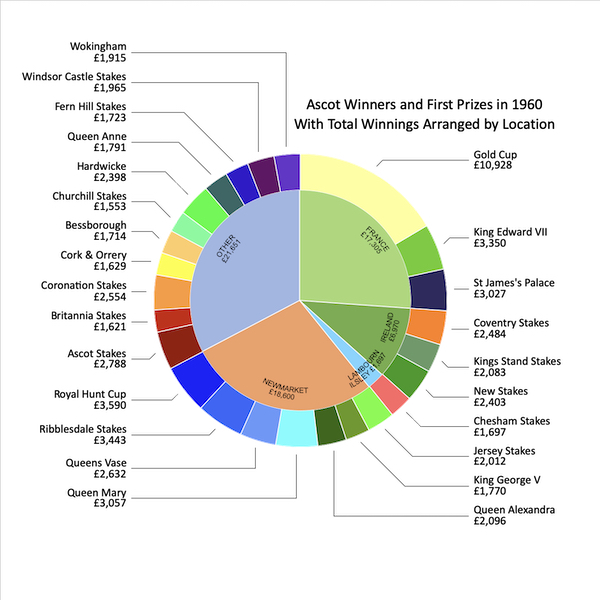
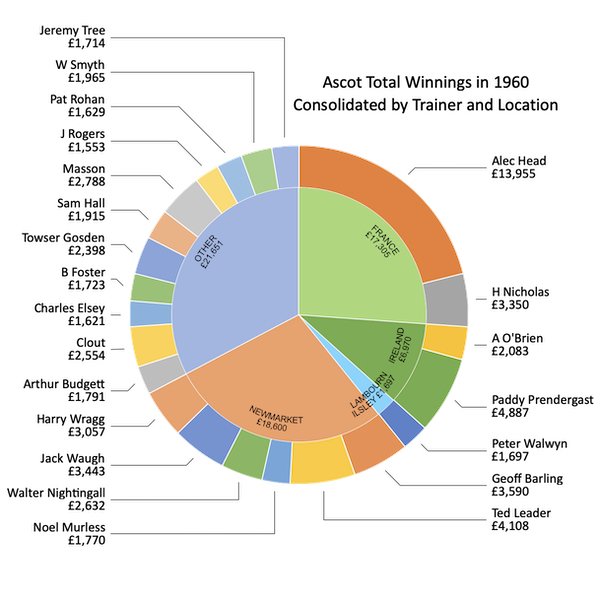
1967-1980 Jim Joel, Tom Waugh junior
After his spell at Wroughton House at the end of the Second World War, Tom Waugh junior moved to Sefton Lodge to train for Jim Joel in 1967, replacing Ted Leader who had travelled in the opposite direction. While he was at Sefton Lodge he took charge of the filly Rose Dubarry who won the 1971 Lowther Stakes in the hands of Tony Murray and the next season finished third in the 1972 1000 Guineas, beaten 2 lengths and a head by Waterloo (SR 1861). Jim Joel's distinctive racing colours, black shirt and scarlet cap, were carried to victory in many top-class races, although many were not trained at Sefton Lodge stables. These included the 1967 Epsom Derby winner Royal Palace (SR 2031), the 1980 St Leger winner Light Cavalry, the 1981 1000 Guineas winner Fairy Footsteps, and the 1987 Grand National winner Maori Venture. He was an extraordinary, well-respected member of the turf, known for his generosity, philanthropy, magnanimous in victory and gracious in defeat. He died in St Albans on 23rd March 1992 at the grand old age of 97, and was buried in the Willesden United Synagogue Cemetery in the London Borough of Brent.
1967 Epsom Derby ROYAL PALACE (SR 2031) 7/4 fav owned by Jim Joel, trained by Noel Murless and ridden by George Moore
1971 Lowther Stakes ROSE DUBARRY owned by Jim Joel, trained by Tom Waugh junior and ridden by Tony Murray
1971 Great Metropolitan Handicap TARTAR PRINCE trained by Tom Waugh junior and ridden by John Higgins
1971 Northumberland Plate TARTAR PRINCE 5/1 trained by Tom Waugh junior and ridden by John Higgins
1980 St Leger LIGHT CAVALRY (SR 1932) 3/1 owned by Jim Joel, trained by Henry Cecil and ridden by Joe Mercer
1981 1000 Guineas FAIRY FOOTSTEPS (SR 1908) 6/4 fav owned by Jim Joel, trained by Henry Cecil and ridden by Lester Piggott
1987 Grand National MAORI VENTURE 28/1 owned by Jim Joel, trained by Andrew Turnell and ridden by Steve Knight
1981-1992 Henry Cecil, Charles St George, Edward St George
By 1981 Charles St George, an insurance underwriter, had purchased the 40 boxes at Sefton Lodge and was living the dream in Newmarket surrounded by the horses he owned. He was a lucky owner as well, owning Kneller who was trained by Henry Cecil when landing the 1988 Jockey Club Cup and Doncaster Cup, while in 1989 he won the St Leger with Michelozzo. In June 1991 newspapers ran a story claiming St George was on the verge of putting Sefton Lodge on the market to cover compensation claims from clients of his former insurance company. Edward St George, younger brother of Charles, based his horses at Sefton Lodge and employed David Loder as his trainer from 1992.
1988 Jockey Club Cup KNELLER 4/6 fav owned by Charles St George, trained by Henry Cecil and ridden by Pat Eddery
1988 Doncaster Cup KNELLER 10/11 fav owned by Charles St George, trained by Henry Cecil and ridden by Pat Eddery
1989 St Leger MICHELOZZO (SR 1929) 6/4 fav owned by Charles St George, trained by Henry Cecil and ridden by Steve Cauthen
1992- 1998 David Loder
David Loder was born in Stow-on-the Wold, Gloucestershire on 27th January 1964 and began his working life in the City of London trading stocks and shares. However, the racecourse beckoned and he became assistant to two of the best mentors in the racing game, Sir Mark Prescott and Geoff Wragg. In 1992 he thought the time was right for him to launch his own training career, taking over at Sefton Lodge. He had a remarkably successful 6 years at Sefton Lodge, winning a Listed race with Lupescu at 20/1 within 4 weeks of the launch of his career, and went on to saddle 35 Group winners during his time at the Lodge. His top horses during this period were Desert Prince, Bahamian Bounty, Blue Duster, Embassy and Peter Davies who he sent to Chicago, after wins at Epsom and Sandown, to contest the Arlington Million, eventually finishing 5th behind Star of Cozzene. On the back of such success he was offered a contract to train for Godolphin which he gladly accepted, reaching the pinnacle of his career when Desert Prince won the 1998 Irish 2000 Guineas. He later moved to Egerton House Stables in late 2003 to continue his career before being hit by a virus which forced him to take a step back from training in 2005.
1992 Jane Seymour Stakes at Newmarket LUPESCU 20/1 owned by Edward St George, trained by David Loder and ridden by Frankie Dettori
1995 Gordon Richards Stakes at Sandown PRINCE OF ANDROS 6/1 trained by David Loder and ridden by Jason Weaver
1995 Queen Mary Stakes BLUE DUSTER 7/4 fav owned by Sheikh Mohammed, trained by David Loder and ridden by Mick Kinane
1995 Princess Margaret Stakes BLUE DUSTER 30/100 fav owned by Sheikh Mohammed, trained by David Loder and ridden by Mick Kinane
1995 Cheveley Park Stakes BLUE DUSTER 4/5 fav owned by Sheikh Mohammed, trained by David Loder and ridden by Mick Kinane
1996 Farndon Conditional Stakes at Chester PRINCE OF ANDROS 3/1 trained by David Loder and ridden by Pat Eddery
1996 Prix Morny BAHAMIAN BOUNTY 56/10 owned by Lucayan Stud, trained by David Loder and ridden by Frankie Dettori
1996 Middle Park Stakes BAHAMIAN BOUNTY 7/4 fav owned by Maktoum Al Maktoum, trained by David Loder and ridden by Frankie Dettori
1997 Cheveley Park Stakes EMBASSY 5/2 owned by Sheikh Mohammed, trained by David Loder and ridden by Pat Eddery
1997 Princess Margaret Stakes EMBASSY 5/2 joint fav owned by Sheikh Mohammed, trained by David Loder and ridden by Pat Eddery
1998 European Free Handicap DESERT PRINCE 7/1 owned by Lucayan Stud, trained by David Loder and ridden by Olivier Peslier
1998 Irish 2000 Guineas DESERT PRINCE (SR 2015) 8/1 owned by Lucayan Stud, trained by David Loder and ridden by Olivier Peslier
1998 Middle Park Stakes LUJAIN 8/11 fav owned by Sheikh Mohammed, trained by David Loder and ridden by Frankie Dettori
1998 Prix Du Moulin DESERT PRINCE 41/10 owned by Lucayan Stud, trained by David Loder and ridden by Olivier Peslier
1998 Queen Elizabeth II Stakes DESERT PRINCE 100/30 fav owned by Lucayan Stud, trained by David Loder and ridden by Olivier Peslier
1999-2000 Jeremy Noseda
Jeremy Noseda, born on 17th September 1963 and educated at Stonyhurst College, spent 6 years learning his trade with John Dunlop before broadening his education at Henry Cecil's for 5 years. In January 1996 he travelled to California to launch his own training career, returning to Newmarket in late 1997. He spent some time training at Sefton Lodge, although the vast majority of his career in England was spent at Shalfleet Stables in Newmarket.
2001-2002 Harvey Cyzer, Dr Tony Ryan
Harvey Cyzer, son of former racehorse trainer Charles Cyzer, moved to Sefton Lodge, owned by Dr Tony Ryan, in 2001. Charles made his fortune from Christmas crackers, but was an accomplished trainer who was based at Horsham Stables in Sussex. In December 2007 Charles sold the stables to Gary Moore. Harvey acted as his father's assistant before enjoying a similar role with Henry Cecil who had, at one time, trained some horses at Sefton Lodge for Charles St George who owned Sefton Lodge at that time. From Henry Cecil's Harvey then went on to be assistant to Nick Littmoden before launching his own career at Sefton Lodge. Harvey improved horses sent to him from other well-known yards, and trained a Group horse in his second season at Sefton Lodge before the premises were taken over by Irishman Mark Wallace in 2003. One horse Harvey was particularly fond of was Traytronic who campaigned well.
2003-2008 Mark Wallace
Mark Wallace was born in Tipperary where his mother kept a few National Hunt mares on their 300-acre farm. In his early 20s Mark worked as assistant to John Oxx for 2 years before taking up a similar post with Aidan O'Brien for a further 2 years. He then moved to England to become assistant to Mick Channon at East Ilsley and, at the age of 30, he applied for his own licence to train. In early 2003 he moved to Sefton Lodge where he trained for 6 seasons. His highest profile success came towards the end of his time at Sefton Lodge when Benbaun won the 2007 Prix de L'Abbaye in the hands of Pat Smullen. In 2008 he made the decision to try his luck training in Australia, basing himself in Sydney, and Sefton Lodge remained empty for the next 5 years.
2007 Prix de L'Abbaye BENBAUN 13/2 owned by Ransley, Birks and Hillen, trained by Mark Wallace and ridden by Pat Smullen
2009-2014 Unoccupied
For a 5-year period the historic Sefton Lodge Stables were unoccupied until Martyn Meade purchased them in 2014 and set about restoring them to their former glory.
2014-2018 Martyn Meade
Martyn Meade saddled his very first winner over the jumps in 1972 and since then had to juggle the demands of the city with life as a trainer. He trained in Wiltshire for some considerable time with mixed success, but was also chairman of Hadliegh Partners, an investment company based in Mayfair. In 2014 he purchased the historic stables of Sefton Lodge in Newmarket which had been empty for 5 years. During his stay at Sefton Lodge he continued to balance his racing life with the demands of the City, and was also able to fit in running Snailwell Stud. In November 2017 he purchased a majority share in the famous Manton Stables in Wiltshire and by the start of 2018 he was able to return to his roots in Wiltshire.
2016 John Banks Renault Cambridge Maiden Stakes at Newmarket EMINENT 6/1 owned by Sir Peter Vela, trained by Martyn Meade and ridden by Jim Crowley
2017 Craven Stakes EMINENT 8/1 owned by Sir Peter Vela, trained by Martyn Meade and ridden by Jim Crowley
2017 G.Dornano Stakes at Deauville EMINENT 11/2 owned by Sir Peter Vela, trained by Martyn Meade and ridden by Ryan Moore
2017 Prix de la Foret ACLAIM 5/2 fav owned by Canning Downs & Partner, trained by Martyn Meade and ridden by Oisin Murphy


Richard Spencer began working in racing stables in 2004, starting out with Peter Bowen in Wales before transferring to Barry Hills stable at Lambourn in 2006. When Barry retired Richard continued to work at the stable under Barry's son Charlie Hills before deciding to widen his experience by moving to Newmarket. In 2012 he worked at Michael Bell's Fitzroy House Stables, and during his time at the stable he rode Bradley, trained by Fergal O'Brien, to win the Royal Artillery Gold Cup at Sandown. In 2015 he thought the time was right to launch his own training career, backed by Phil Cunningham, he joined Rebel Racing at Albert House. In February 2018 Cunningham purchased the historic 47-box Sefton Lodge Stables from Martyn Meade and invited Spencer to head up the venture.
POMMERN (1915 English 'War Time' Triple Crown)
DESERT PRINCE (1998 Irish 2000 Guineas)
MICHELOZZO (1989 St Leger)
TRISTAN (1882 July Cup, Champion Stakes, 1883 Ascot Gold Cup)
POLYMELUS (1906 Champion Stakes)



